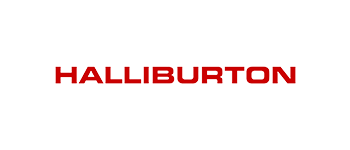
If the ranking of the site pages is not well, then, it could be because of on-site SEO (Search Engine Optimization) issues. However, in such cases, they must be addressed and fixed on time. Otherwise, you have to experience customer loss and a decline in business growth. Essentially, it is essential to have HTTPs for website security. However, to check if the site lacks security, write the domain name in Google Chrome. A gray background or in the worse case, a red background will be shown with a “Not Secure” sign or warning. The result- the visitors will immediately move from the site, hence, causing issues in ranking. How to Fix it To resolve it, firstly, find out if the site has HTTPs. For that, type the domain name in explorer. If it shows a “secure” message, then, your website is secure. In case it is not, then, follow the below steps: For transforming the site to HTTPs, you require an SSL certificate by the Certificate Authority. When the user purchases and installs the certificate, the HTTPs security is confirmed. Website speed plays an important role in higher ranking. When the site has a faster speed, then, the visitors will have the best experience. The case is different when it is slow. Definitely, it can drop the ranking. You need to know that Google reduces the number of site crawlers when the response time is not two seconds. It signifies the indexing of fewer pages. How to fix it? Seek help from Google PageSpeed Insights. It keeps track and calculates the site performance for mobile and desktop versions. It shows suggestions on improving the website speed. Positively, it gives valuable details on solving the issue. Also, in case of assistance, WordPress users can hire an experienced hosting provider. It is advisable to choose services that are fully tested for uptime and good speed. Moreover, minifying JavaScript CSS and web page image optimization assures the best outcome possible. Is your site shown on search engines when searched? NO? Then, the chances that there are indexing issues. When it is about Google, if there is no indexing of pages, it means, they do not exist and searching them is not probable. To confirm the same: Type “site:oursitename.com” on the search bar of Google and check the number of the website indexed web pages. How to Fix it? Those websites with several pages with one or two broken links do not cause any issues. But, the case is different when there are several. The reasons: How to fix it? Use Google Search Console and select “Crawl Errors” from “Crawl” to know the web pages showing 404 responses. In case, there is an error, then, resolve it at first. Otherwise, the website visitors move to other sites, or they get navigated to other site pages. Any website should not have any duplicate non-unique content. The reason is simple- it will negatively influence the site ranking. Moreover, the site can get penalized and the chances of ranking on SERPs can be lost. How to fix it? You can leverage the tools such as CopyScape and Siteliner to know the uniqueness of the content. If the site content has duplicates, then, follow the below-defined steps: If different URLs are sharing similar content, then, website backlinking, parameter tracking issues, and link sharing, are possible. To get rid of this, get help from Canonical Tag. The bot that encounters it will discover the link to the real resource. Every link to the duplicate page is considered a link to the actual page. Hence, you cannot lose any value of SEO from these links. Include canonical tags with code on duplicate and original content: “<link rel=” canonical” href=”https://oursite.com.com/category/resource”/>” Put the canonical tag in the metas, which are placed at the bottom of the page below “Yoast SEO Premium”. We all know that missing a robot.txt file can cause problems. But, do you know if the Robots.txt is not configured correctly, then, it can kill organic website traffic. To check: How to fix it? Image optimization issues are general, however, until the site is highly reliant, then, they can be saved for later. Missing broken images and alt tags are the common issues businesses come through. Significantly, the Alt tags are images of HTML attributes that define the content. If there is no correct order of image components then use a sub-tag for an image showing content and function. However, keyword enforcement for enabling search engine browsers to know the web page information. How to fix it? It is not a difficult task. Just place the image component in the HTML code and include the Alt tag. The image source will be like this: <img src=“images.jpg” alt=“image description” title=“images xyz”> Do you remember when “www.yourwebsite.com” and “yourwebsite.com” went to a similar place? However, it is not a big thing, but it also implies that Google can index different versions of URLs that can reduce the visibility of your site in searches. How to Fix It? First, find out if various URL versions are directed to the standard URL. It includes HTTP and HTTPS versions; the versions such as, “www.ourwebsite.com/home.html” are also included. Examine the likely combinations. Secondly, “site:oursitename.com” can be used to find the indexed pages and know if they are navigating to different URL versions. If so, then, address “301 redirects” or let the SEO agency do so. However, the canonical domain can also be chosen. It is not essential that the title tags are general, however, there are many. Below are the common ones: How to fix it? Shorten the title tag of the existing web page. This is because 70 to 71 characters are suitable for showing space for new devices. In case there is any doubt, check out the format: Primary Keyword – Secondary Keyword | Name of Brand Provide a different Title tag for each page. For example for an online store, the following formula can be used for creating a title tag: [Item Name] – [Item Category] | [Brand] Use the keyword at the title tag beginning According to Google, Structured Data is a particular format that gives details on page and content classification. That is to say, it is an easy way to assist the crawlers to Google search to know the data and content on the web page. Considering an example of the page suggesting various recipes. In that case- the ingredient list could be considered as the content for structured data format. Address details, considering the google example is another data type for bets structured data format: <script type=”application/ld+json”> { “@context”: “https://schema.org”, “@type”: “Organization”, “url”: “https://www.example.com”, “name”: “Xyz Corp.”, “contactPoint”: { “@type”: “ContactPoint”, “telephone”: “+65-401-555-2121”, “contactType”: “Customer service” } } </script> Then, the structure data could be shown on SERPs in the rich snippet form, which shows the visual appeal of SERP listing. How to Fix It? When the new content is created, find out the possibilities to use the structured data on the web page. Then, coordinate the strategies with the SEO team and content creators. We advise using the structured data to enhance CTR and boost ranking for SERP pages. After implementing the structured data, examine the GSC report on a regular basis. It ensures no issues are reported by Google using structured data markup. Google has launched its first mobile index in 2018. Since then, the search engines started ranking sites according to mobile versions. Mobile-ready means the site has to be optimized for mobile browsing and responsive website design ready. Some sites are not mobile-optimized. Even the statistics speak for themselves that approximately 6.64 billion users are using smartphones globally. And, the internet users in the 69 percentile prefer to shop online than visit in person. Hence, if you fail to make the site optimized for mobile, then, you can lose a higher amount of customers. How to fix it? The 160 characters and short content that defines all about the web page is Meta Description. From these snippets, the search engines can simply index the web page. Also, the well-drafted description may engage the visitors to the web page. Undoubtedly, it is an easy-to-use SEO feature, though several pages cannot have the essential content. Chances are you cannot check this type of content on the web page. However, it is a vital feature that supports the users to understand if they like to choose the result after making the queries. Similar to the page content, the meta descriptions have to be optimized properly. It is so to match the content of the page, hence, integrating only the suitable keywords. How to Fix It? When it is about the missing meta description, follow the below steps: When it is about the web pages with meta descriptions: Content with less word count can drop SEO ranking, and vice-versa is also true! The thin or low word count of content is nothing but an attempt to increase the number of web pages without providing quality to every page. How to fix it? If the site URL ends with “index. php?p=465455” then it is nothing to search engines and to you as well. Even though they are not user-friendly, they are meaningless. How to fix it? Follow the below pointers to fix the on-site SEO issue: Do you find any issue with the contact form? Are users not filling it? The research confirms that out of 1.5 million users, only 49% fill the form when seen. Of 49%, those who complete it are 16%. How to fix it? ** if required, ask for other details ** If your site’s audience is worldwide, then, language declaration is essential. This makes search engines find the language. Particularly, when it is about text-to-speech conversion, it improves the user experience as translators can read the content in an accurate native language dialect. In addition, there are several geo-location and SEO benefits. How to fix it? For declaring the region, particularly of the web page, rel=” alternate” hreflang tag can be used. For <head> section of https://sample.com/uk, include the link element navigating towards french page at “https://oursite.com.uk-fr”, like: <link rel=”alternate” hreflang=”fr” href=” https://oursite.com/uk-fr” /> Majorly, the mistakes of sites are using incorrect language codes. You need to understand that language declaration is a vital part of the relevance score for web pages. The other issue is about return tag errors- hreflang annotations are the reason behind them. It does not cross reference, therefore, use google search console -> International Targeting for finding such errors. Confirm these annotations from different web pages. It implies that when page X is linked to Y, then, Y has to be linked back to X. This is all we have to say! Feasibly, now you have an idea of how to rectify the on-site SEO issues. Assuredly, these are the best and most enduring ways to boost site ranking and give a positive influence on SERP visibility. You can also hire the best SEO company in Singapore to get help if still not clear on resolving the technical SEO problems. Awebstar is the name for you! We offer definite SEO services, investigate the top on-site problems and give the best solution. Contact us now to get a quote!
Certainly, assistance from a leading and professional SEO agency can be taken. Basically, they have the knowledge on fixing the on-site SEO issues and assuring the best results. On the contrary, the checklist of common on-site SEO problems is huge that needs to be resolved. Do you know the major issues to focus on? Here, in this article, we are revealing those! Check out!What are common on-site SEO issues and the best ways to fix them?
No HTTPS Security
Slow Website Speed

Incorrect Site Indexing
Broken Links
Duplicate Site Content
Incorrect or Missing Robots.txt
Missing Broken Images and Alt Tags
Different Homepage Versions
Issues in Title tags
Less Usage of Structured Data
Mobile Browsing Non-Optimization

Non-Optimized or Missing Meta Descriptions
Less Word Count
Messy and Non-intuitive URLs
Unused Contact Forms
Wrong Language Declaration
Concluding Remarks















































